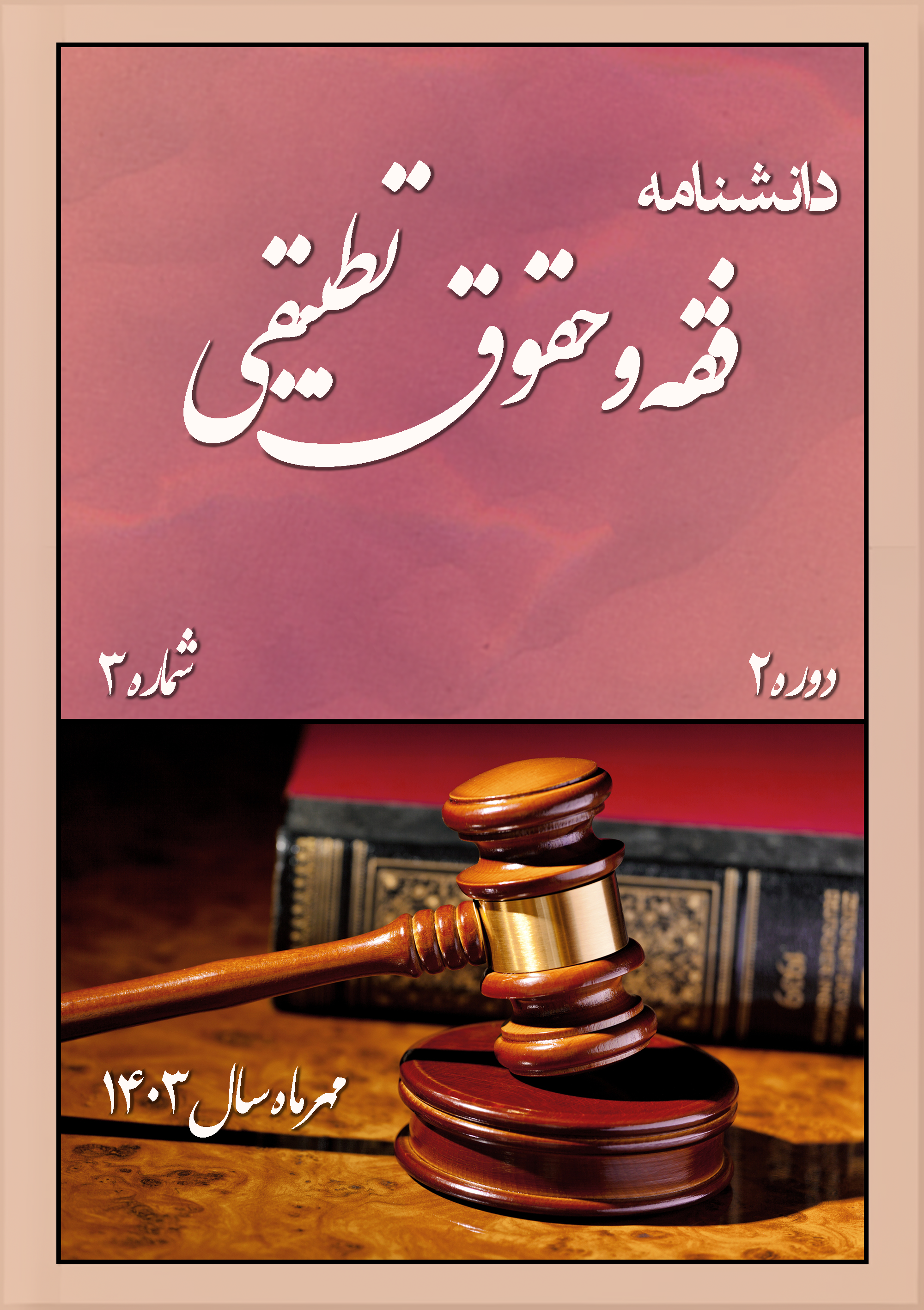Civil Liability Arising from the Use of Intelligent Robots in the Field of Medical Science
Keywords:
Civil liability, robotic surgeries, robot software malfunctions, robot hardware malfunctionsAbstract
Robotics technology is constantly evolving and promises numerous benefits for the future of humanity. All these advancements are defined through interaction with human society. However, this interaction can be a source of both benefit and harm, which underscores the necessity of legal frameworks to regulate the relationships between robots and society. Civil liability is one of the most significant topics in civil law, particularly due to the conflict of individual rights in industrial societies. Robots are capable of interacting with humans across various domains, and such interactions create a context in which harm and benefit may arise. The discussion on civil liability stemming from robotic surgeries in medicine directs us toward a re-evaluation of traditional legal doctrines and invites a detailed analysis of the distinct and specialized elements of robotic and remote surgeries in medical contexts. This paper employs a descriptive-analytical method, and the author seeks to, alongside explaining the theoretical foundations governing the civil liability of surgical teams in robotic surgeries, distinguish between software and hardware malfunctions that disrupt surgical procedures and may result in harm to patients, potentially leading to their death. The paper further aims to delineate differentiated civil liability rules for surgical teams based on the consequences of each type of malfunction. It will be argued that the commission or omission of a harmful act by a robot entails liability, and depending on the case, the human agent shall be held accountable based on the “theory of respect” and obliged to compensate for the damage, as the robot lacks legal or natural personhood and cannot bear liability.
Downloads
References
Ahmadzadeh Bazaz, S. A., & Mehriyar, M. (2017). A Comparative Study of Civil Liability Arising from Ownership of Objects and Its Remedies in Iranian and Egyptian Law. Comparative Law Journal(2).
Ansari, M., & Taheri, M. A. (2009). Encyclopedia of Private Law. Jungle Publications.
Badini, H. (2005). Philosophy of Civil Liability. Sherkat Sahami Enteshar.
Balkin, J. M. (2015). The Path of Robotics Law. California Law Review, 6, 45-60.
Barikloo, A. (2010). Civil Liability. Mizan Publications.
Bridy, A. (2012). Coding Creativity: Copyright and the Artificially Intelligent Author. Stanford Technology Law Review(5), 1-28.
Calo, M. R. (2016). Open Robotics. Maryland Law Review, 7.
Cerka, P., Grigiene, J., & Sirbikyte, G. (2015). Liability for damages caused by artificial intelligence. Computer Law & Security Review, 31, 376-389. https://doi.org/10.1016/j.clsr.2015.03.008
Cerka, P., Grigiene, J., & Sirbikyte, G. (2017). Is it possible to grant legal personality to artificial intelligence software systems? Computer Law & Security Review, 33, 685-699DO - 610.1016/j.clsr.2017.1003.1022.
Ghasemzadeh, S. M. (2009). Obligations and Civil Liability Without Contract. Mizan Publications.
Grimmelmann, J. (2016). There’s No Such Thing as a Computer-Authored Work-And It’s a Good Thing, Too. Columbia Journal of Law & the Arts, 3, 403-416. https://doi.org/10.31228/osf.io/rk8cm
Hajidehabadi, M. A., Behzadiniya, F., & Esmaeili, S. (2014). An Introduction to Robotic Criminal Liability from the Perspective of Technology Rules and Islamic Law. Comparative Research Quarterly of Islam and the West, 1(2).
Hassannavi, R. (1994). Webster’s Dictionary of Computer Terms. Rayzan Publications.
Jafari Langaroudi, M. J. (2005). Terminology of Law. Ganj Danesh Library.
Jafari Tabar, H. (1996). Civil Liability of Manufacturers and Sellers of Goods. Dadgostar Publications.
Johnson, D. G., & Verdicchio, M. (2018). Why Robots should not be treated like Animals. Ethics and Information Technology(20), 291-301. https://doi.org/10.1007/s10676-018-9481-5
Katouzian, N. (2003). Civil Law (Non-Contractual Obligations). University of Tehran PressLA - Persian.
Katouzian, N. (2005). Liability Arising from Product Defects. University of Tehran Press.
le Tourneau, P. (1972). La Responsabilité Civile (Vol. 1). Dalloz.
Mackie, T. (2018). Proving Liability for highly and fully automated Vehicle Accidents in Australia. Computer Law & Security Law, 34, 1314EP - 1332. https://doi.org/10.1016/j.clsr.2018.09.002
Mazeaud, H., Léon, & Jean. (1998). Leçons de Droit Civile. II.
Mehri, M. (2011). What Is Software?
Moein, M. (1992). Moein Six-Volume Dictionary. Amir Kabir Publications.
Mohammadi, M., Abdali, M., & Akbariteh, P. (2018). Foundations of Civil Liability Arising from Objects (Buildings and Animals) in Iranian and French Law Based on the 2016 French Civil Code. Comparative Legal Research, 22(1).
Müller, M. F. (2016). Liability Issues Concerning Self-Driving Vehicles. EJRR Special Issue on the Man and the Machine(2).
Müller, M. F. (2017). Roboter als Wundertüten - eine zivilrechtliche Haftungsanalyse. PJA(2), 152.
Paydar, H. (1975). Why Is Man Responsible and Committed? Islamic Culture Publications.
Rahpeyk, H. (2013). Civil Liability Law and Remedies. Khorsandi Publications.
Rajabi, A. (2017). Intellectual Property Rights of Non-Human Created Products. Private Law Journal, 14(2).
Safaei, H., & Rahimi, H. (2011). Civil Liability (Non-Contractual Obligations). SAMT Publications.
Salehi, H., & Abbasi, M. (2011). Examining the Nature of Medical Obligations and Its Aspects in Light of Comparative Studies. Medical Law Quarterly(16).
Sanssi, S. M. (2005). Dictionary of Computer Terms and Terminology. Sanssi Publications.
Simmler, M., & Markwalder, N. (2018). Guilty Robots? - Rethinking the Nature of Culpability and Legal Personhood in an age of Artificial Intelligence. Criminal Law Forum. https://doi.org/10.1007/s10609-018-9360-0
Solum, L. B. (1992). Legal Personhood for Artificial Intelligences. North Carolina Law Review, 70(4), 1231-1287.
Taghizadeh, E., & Hashemi, A. A. (2011). Civil Liability. Payam Noor Publications.
Vahdati Shabiri, S. H. (2009). The Basis of Civil Liability or Guarantee Arising from Breach of Obligations. Islamic Studies Journal: Jurisprudence and Principles, 41(82).
Vladeck, D. C. (2014). Machines without Principales: Liability Rules and Artificial Intelligence. Wash L Rev(89), 117-150.
Warburton, N., & Maryam, T. (2014). A Little History of Philosophy. Qoqnoos Publications.
Wildhaber, I., & Müller, M. F. (2017). Roboterrecht - eine Einleitung. PJA(2), 135-140.
Yazdanian, A. (2000). The Scope of Civil Liability. Adabestan Publications.
Yazdanian, A. (2007). Civil Law: General Rules of Civil Liability. Mizan Publications.
Yazdanian, A. (2017). Proposing the Rule of Civil Liability Arising from Objects in Iranian and French Law. Private Law Studies Quarterly, 47(2).
Yazdanian, A., Mahdavi, S. M. H., Abbassian, R., & Mosallinejad, N. (2016). A Comparative Study of the Characteristics of Objects in Civil Liability Arising from Objects in Iranian and French Law. Comparative Legal StudiesVL - 7(1).
Downloads
Published
Submitted
Revised
Accepted
Issue
Section
License
Copyright (c) 2024 حدیث حامدی (نویسنده); عبدالرحیم مرادی; مریم آقایی بجستانی (نویسنده)

This work is licensed under a Creative Commons Attribution-NonCommercial 4.0 International License.










